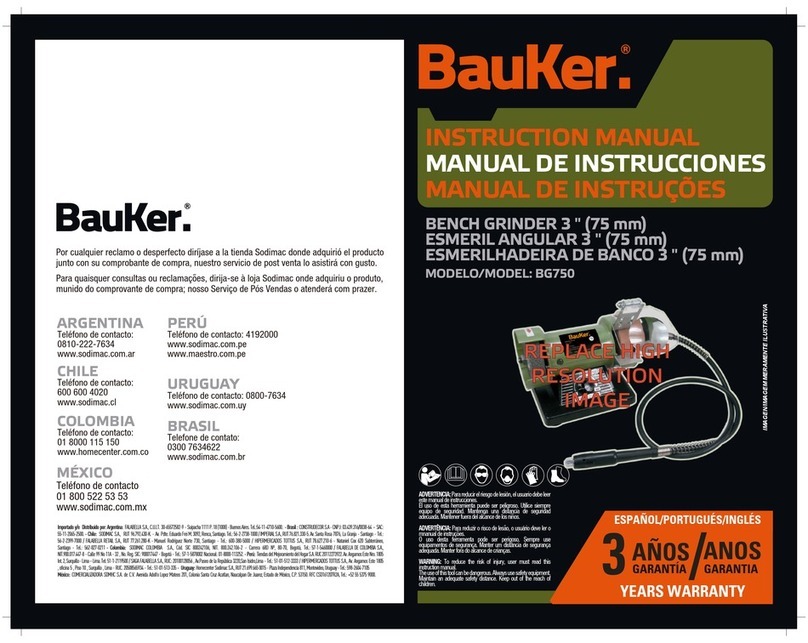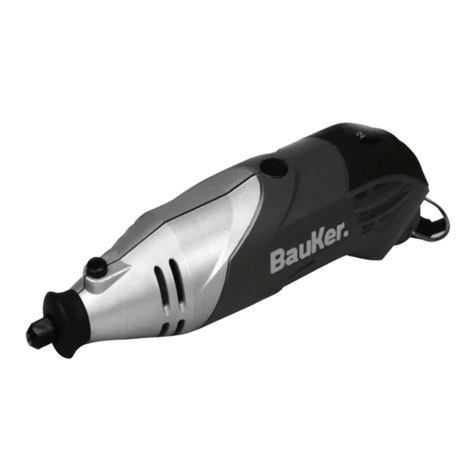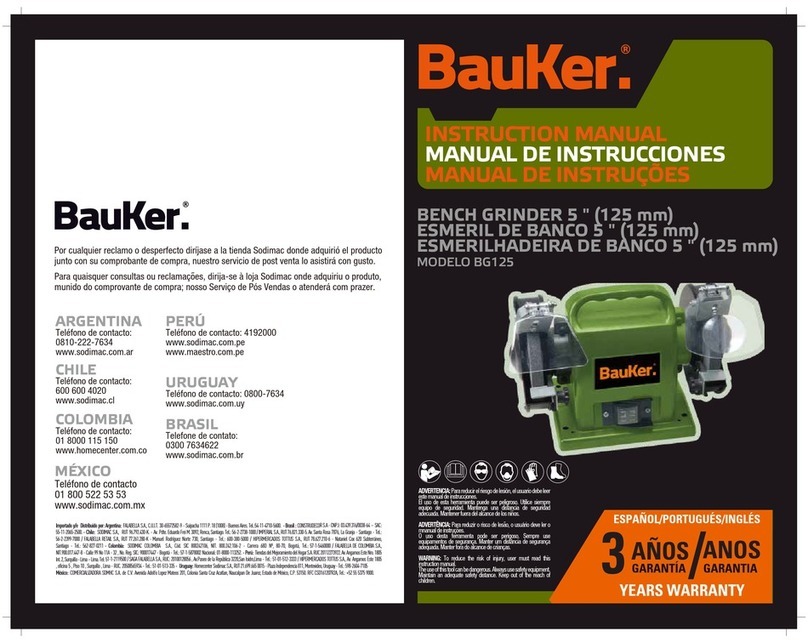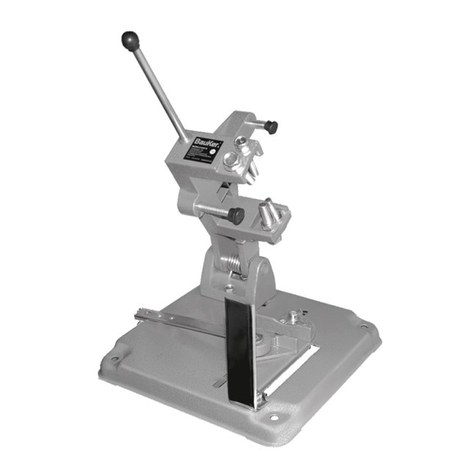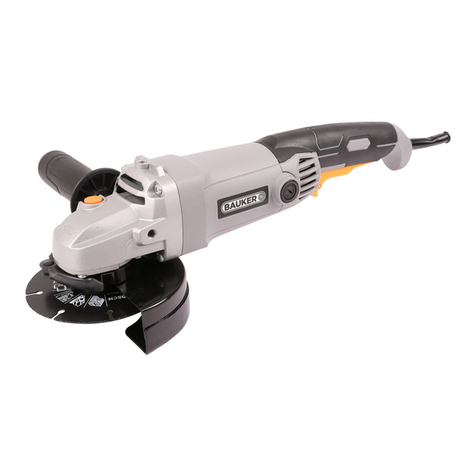
EN-6
accessory, position yourself and bystanders away
from the plane of the rotating accessory and run
the power tool at maximum no-load speed for one
minute. Damaged accessories will normally break apart during
this test time.
h) Wear personal protective equipment. Depending on
application, use face shield, safety goggles or safety
glasses. As appropriate, wear dust mask, hearing
protectors, gloves and workshop apron capable of
stopping small abrasive or, workpiece fragments.
The eye protection must be capable of stopping
ying debris generated by various operations . The
dust mask or respirator must be capable of ltrating, particles
generated by your operation. Prolonged exposure to high
intensity noise may, cause hearing loss.
i) Keep bystanders a safe distance away from work
area. Anyone entering the work area must wear
personal protective equipment. Fragments of workpiece
or of a broken accessory may y away and cause injury beyond
immediate area of operation.
j) Hold power tool by insulated gripping surfaces only,
when performing an operation where the cutting
accessory may contact hidden wiring or its own
cord. Cutting accessory contacting a "live" wire may make
exposed metal parts of the power tool "live" and could give the
operator an electric shock.
k) Position the cord clear of the spinning accessory. If
you lose control, the cord may be cut or snagged and your hand
or arm may be pulled into the spinning accessory.
l) Never lay the power tool down until the accessory
has come to a complete stop. The spinning accessory
may grab the surface and pull the power tool out of your control.
m) Do not run the power tool while carrying it at your
side. Accidental contact with the spinning accessory could snag
your clothing, pulling the accessory into your body.
n) Regularly clean the power tool’s air vents. The
motor’s fan will draw the dust inside the housing and excessive
accumulation of powdered metal may cause electrical hazards.
o) Do not operate the power tool near ammable






